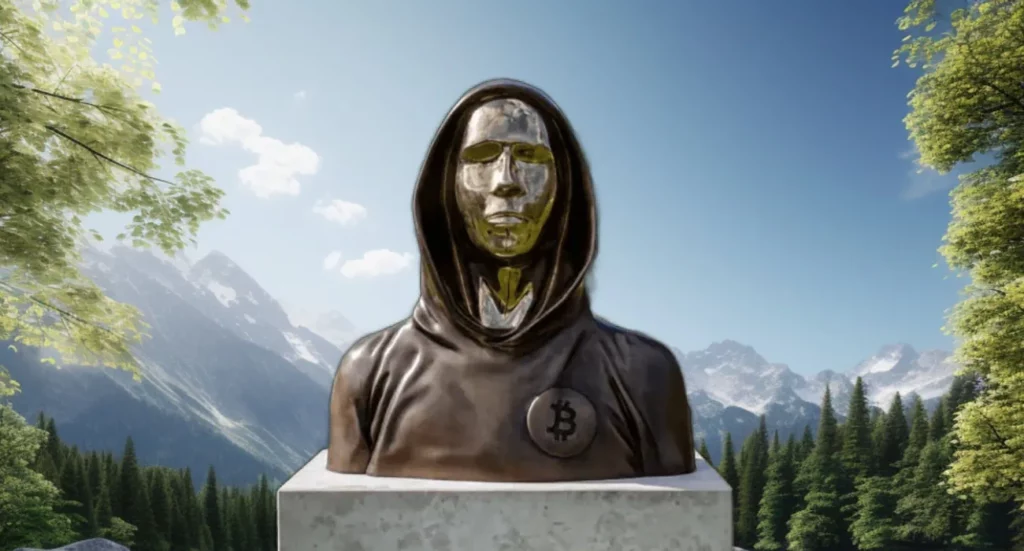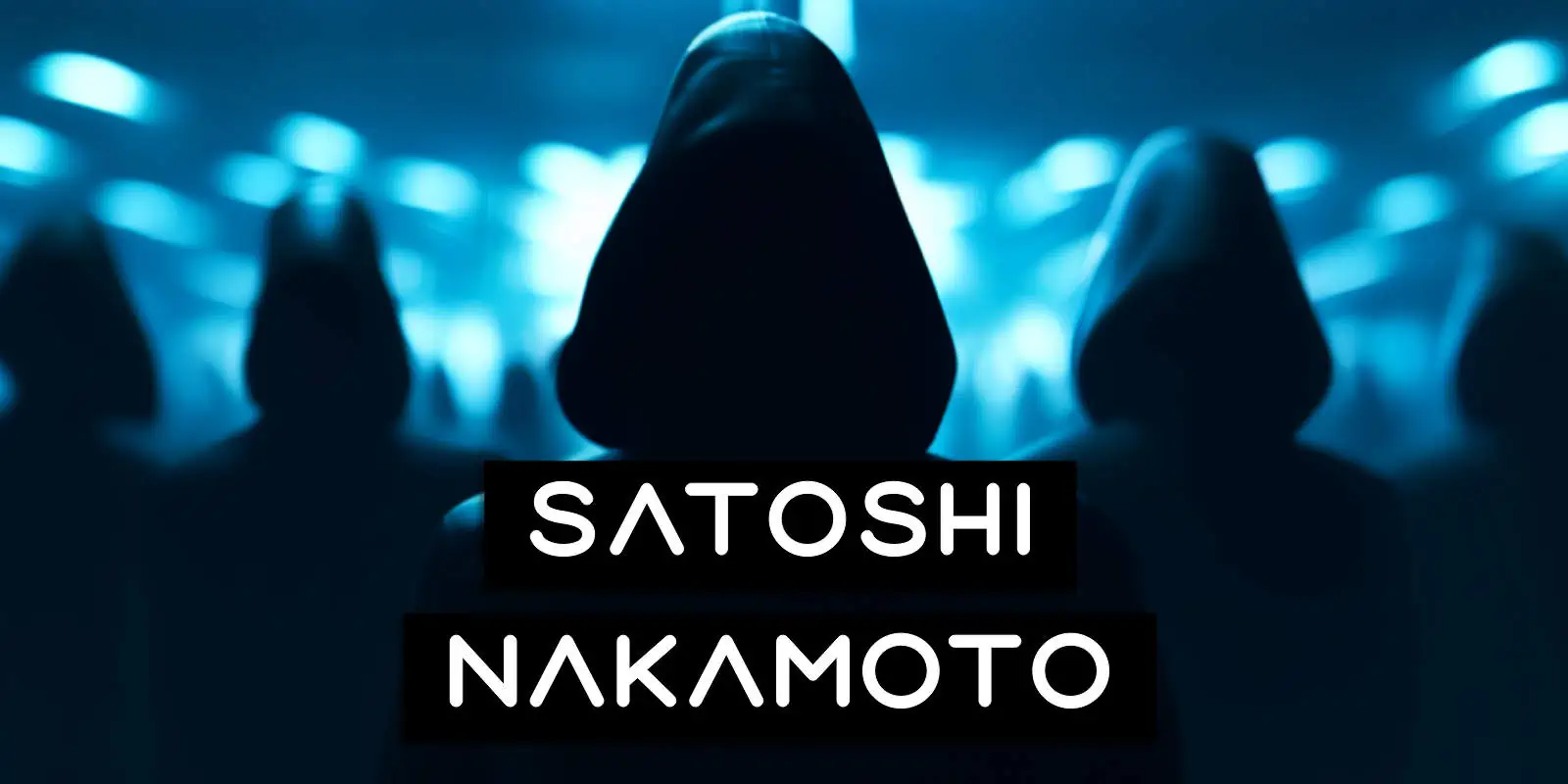I’ve been working on a new electronic cash system that’s fully peer-to-peer, with no trusted third party – Satoshi Nakamoto
Contents
Who Is Satoshi Nakamoto?
Satoshi Nakamoto is a pseudonym for the person or persons that invented Bitcoin and introduced it to the world back in 2008. They authored and released the first copy of the Bitcoin Whitepaper titled Bitcoin: A Peer-to-Peer Electronic Cash System.
While Satoshi Nakamoto’s true identity still isn’t know to this day, they are the one that designed the Bitcoin network and created the first Bitcoin software that runs it. It’s also unknown as to whether Satoshi Nakamoto is their a real life name, a pseudonym or a pseudonym for a group of people,
They were the Bitcoin founder, the first to mine it, the one who created the Genesis block and were active in bitcoins development until December 2010 when they mysteriously left. They were silent until 2014 when they made one last comment stating that they weren’t Dorian Nakamoto and have never been heard from again.

Who Created Bitcoin?
While many think that Satoshi just pulled Bitcoin out of no where, the truth is that they were in fact standing on the shoulders of giants. The technologies that enable Bitcoin were built and worked on by hundreds of people over the course of decades prior to its inception in 2009.
From basic public and private key cryptography that has been around since the 1970’s, to multiple different forms of “digital currency” or electronic money, Satoshi was clearly building on what had come before.
Cypherpunks, a group of often anonymous individuals that advocate for the use of widespread cryptography and privacy enhancing technologies such as HTTPS or End-to-End Encryption, had been seeking a form of digital cash for many years before Bitcoin arrived.
They saw that money was quickly moving more and more into the digital realm which meant that individuals were forced to accept increased surveillance and control by the state.
Digital cash was a way to bring financial privacy back to the online world, just like an individual would have when they transact with cash in the real world. Some early attempts at a digital currency include:
- DigiCash / eCash (1989)
- CyberCash (1994)
- E-gold (1996)
- Hashcash (1997)
- B-money (1998)
- WebMoney (1998)
- Liberty Reserve (2006)
- Perfect Money (2007)
- Bit Gold (2008)
New to Athena Alpha? Start today!
All of these failed for one reason or another and helped set the stage for Bitcoin to flourish. For example, Hashcash helped lay the foundation for what we now know as Proof-of-Work (PoW) and Bitcoin Mining.
These failed attempts also show that Bitcoin wasn’t just some magic lightning bolt that came from the sky, but instead was the result of continued trial and error on the part of many different people.
From cryptographers in the 70’s, to Cypherpunks in the 2000’s Bitcoin brought together dozens of unique, disparate technologies as well as brand new ideas to form a far more advanced form of money than anything humans have ever had before.
What Do We Know About Satoshi Nakamoto?

For a few years Satoshi spoke back and forth with developers and others on the Bitcoin forum as well as managed the general Bitcoin Core software. Bitcoin grew quickly over this short time frame and then on the 12th of December, 2010 they disappeared forever. Although they created the entire Bitcoin industry, they selflessly excused themselves and have never returned.
These emails and forum posts are still viewable today and have been curated by the Satoshi Nakamoto Institute. If we dig right through these emails there’s no specific evidence as to who they are, however it’s possible to speculate on what general traits they may have had.
- A Single Person, Not Group: The writings consistently show a coherent and singular voice which suggests they were likely authored by a single person, not a group. The style, tone, and technical insights found in the Bitcoin whitepaper, forum posts, and emails are all remarkably consistent, strongly implying a single author. While this could have been faked by a group, it’s less likely
- Very High Technical Competence: In order to understand all the disparate technologies and complex concepts that Bitcoin brings together, it’s likely that Satoshi had a strong understanding of computer science, cryptography as well as peer-to-peer networking at a minimum. This included discussing and building on complex technical concepts like proof-of-work, hash functions, network protocols, coding and more
- Cypherpunk Community: Given the publishing of the original white paper was made on a cryptography mailing list, it’s seems certain that they considered themselves a Cypherpunk. They also show clear prioritization for enhancing anonymity, security, privacy and decentralization when discussing and improving the bitcoin code
- Language: As the paper was published in English, and due to its correctness in grammar and spelling, it’s likely that Satoshi is fluent in English or that it’s their first language
- Education: Given the highly technical nature and understanding required to discuss and build on such complex computer, cryptographic and networking concepts, it’s likely they had a high level of education in computer science, cryptography, and related fields. The ability to develop a groundbreaking system like Bitcoin suggests a strong academic background, possibly at least a master’s or doctoral level degree
- Gender: If they did obtain a degree in computer science prior to 2007, there’s a roughly 70%+ chance that they’re male according to National Center for Education Statistics
- Age: Given they likely required an education level of masters or higher and the fact that development of Bitcoin would have at least been done in 2007 or earlier, it’s likely they were around 25-30 years old in 2007, meaning they would be 42-47 years old today or older. Less likely but still possible, they could also have been a child prodigy genius and be much younger
So if we’re broadly generalizing based purely off the written text of Satoshi Nakamoto and some logical conclusions, they are a 40+ year old male with a masters or doctorate degree in computer science and / or cryptography that lived in an English country and have strong affiliations with the Cypherpunk community.
Again, this is all purely speculative and is simply what the statistics say is “most likely”, not what actually is. What we do know with more certainty though is how wealthy Satoshi is.
How Much Is Satoshi Nakamoto’s Net Worth?
To this day it’s still not know who this person or persons were. While many have claimed to be Satoshi, none have been able to do the one thing that would prove beyond a shadow of a doubt that they were actually them: spend funds from Satoshi’s addresses.
As Satoshi started Bitcoin, they were the first to mine it, which allowed them to build up a huge amount of BTC from all the block rewards. It’s estimated that they mined at least 1.1 million bitcoins between January of 2009 and January of 2010 which would now be worth tens of billions of dollars.
Since they were originally mined all those years ago, these bitcoin’s have never moved. Any person wishing to prove beyond any reasonable doubt that they are Satoshi should have access to, and thus be able to spend / send those original bitcoins. So far, no one has stepped forward and proven their claim.
What Problem Did Satoshi Solve?
As noted above, the idea of having digital money wasn’t a new idea in 2008. As far back as 1989 with DigiCash and eCash, many in the online community were trying to create a viable online payments system. There were a number of problems though.
One of the biggest was that any new money that was created under a company or other known entity would be subject to the rules and laws in the country it was based. It could also be targeted by states and others to take down the currency. This led designers to make a decentralized currency.
The root problem with conventional currencies is all the trust that’s required to make it work. The central bank must be trusted not to debase the currency, but the history of fiat currencies is full of breaches of that trust.
Satoshi Nakamoto
The other major problem was that as digital information can easily be copied, there needed to be a way to stop people from simply copying the new money infinitely and thus, devaluing it. The mysterious bitcoin creator came up with an ingenious solution to this “double-spend” problem in the form of the Bitcoin Blockchain technology and Proof-of-Work.
The pseudonym Satoshi Nakamoto also added in what’s known as the difficulty adjustment mechanism to ensure that bitcoin’s blockchain always mined a new block on average every 10 minutes, no matter how big it grew.
This new peer to peer electronic cash system started the entire cryptocurrency community and introduced the world to smart contracts as well as the world of decentralized finance.
Possible Identities Of Satoshi Nakamoto
The internet loves a mystery and over the years there’s been countless people both accused of being Satoshi as well as claiming to be them.
Hal Finney
Hal was one of the first people, besides Satoshi Nakamoto, to “run” bitcoin. His famous tweet about it on the 11th of January, 2009 has been shared thousands of times over the years. The “running” refers to him downloading and running the Bitcoin Core code to run a full Bitcoin Node.
He was the first person to receive a bitcoin transaction and was also active in the Bitcoin community both before and after its launch. Diagnosed with ALS in 2009, he fought bravely against the disease until in 2014 he passed away. His wife now runs his Twitter account.
Dorian Nakamoto

Dorian Nakamoto, whose actual real name is Satoshi, has become essentially the “face” of Satoshi over the years. Originally he was named as the creator by Leah McGrath Goodman in a Newsweek article back in 2014. However later on Dorian’s attorney contacted them to deny his role in Bitcoin.
This however doesn’t stop countless articles and memes from being created with his face still all over it when referring to the real Satoshi. Back in March 2014 he was 64 years old and is a Japanese-American man.
I am not Dorian Nakamoto.
Reply by Satoshi Nakamoto on March 7, 2014 at 1:17
Given the staying power that good memes have and that it’s still going on literally 10 years later, we think it’s safe to say that Dorian Nakamoto will probably be the face of Satoshi forever.
Craig Wright
Craig Wright is a computer scientist from Australia who is one of the few people that actually claims to be Satoshi Nakamoto and the inventor of bitcoin, rather than denying it like most others do. He has repeatedly taken these claim to the courts, mainly in the UK, but most in the crypto community still regard him as a fraud with his evidence being refuted many times due to inconsistencies.
One small win he has had is to have the Bitcoin White Paper banned from the Bitcoin.org website for those in the UK. This was due to the entity that runs the bitcoin website, CobraBitcoin, declining to appear in court in order to maintain their privacy.
Nick Szabo
Nick Szabo, a man of Hungarian descent, created the Bit gold project in 1998 in order to fix inefficiencies in traditional financial institutions, but the Bit gold project was never finished. Many have suggested he might be the true identity of Nakamoto as he is responsible for many of the ideas inside the whitepaper, but he denied it back in 2014.
I’m afraid you got it wrong doxing me as Satoshi, but I’m used to it
Nick Szabo
Other Possibilities
- Adam Back: A cryptographer, inventor of Proof-of-Work (PoW) and CEO of Blockstream
- Wei Dai: Creator of b-money and of the Crypto++ cryptographic library
- Gavin Andresen: A key developer in the early days of Bitcoin
- Martti Malmi: The other first Bitcoin developer besides Satoshi
Whoever the mysterious inventor is, they obviously either don’t ever want to be identified or have passed away already. Given the huge fortune bitcoin’s creator could access, it’s a mystery that may never be solved.
FAQ
What Happened To Satoshi Nakamoto?
For a few years Satoshi spoke back and forth with developers and others on the Bitcoin forum as well as managed the general Bitcoin Core software. Bitcoin grew quickly over this short time frame and then on the 12th of December, 2010 they disappeared forever, only making one other comment in 2014 to say they weren’t Dorian Nakamoto.
Does Satoshi Still Own Bitcoin?
As Satoshi started Bitcoin, they were the first to mine it, which allowed them to build up a huge amount of bitcoin from all the block rewards. It’s estimated that Nakamoto owns at least 1.1 million bitcoin between January of 2009 and January of 2010 which would now be worth tens of billions of dollars today.
Who Is The Richest Bitcoin Owner?
Besides Satoshi Nakamoto, who holds around 1,100,000 bitcoin in about 22,000 different addresses, the richest bitcoin owner is generally unknown. There are some huge addresses, but they are known to belong to exchanges like Binance. Beyond that, there are numerous “anonymous” wallet holders with over 110,000 BTC. It’s also possible someone owns many of these large addresses, so it’s really impossible to know for sure.
Why Is Satoshi Nakamoto Anonymous?
If the true identity of Satoshi was actually known, a government or other body could have taken them down to try and stop Bitcoin’s rise to power. Conversely they may have done something wrong and caused the world to shun the technology. By stepping down and remaining anonymous, Satoshi ensured the future of Bitcoin would be only about Bitcoin and the technology, not them.



